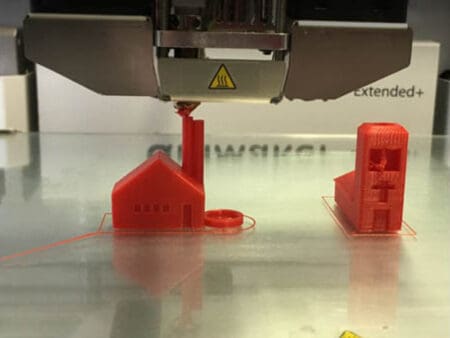
DEWA’s filing of a 3D printing patent, the power of quantum for solar energy harvesting and a possible Samsung Galaxy Ring are on the week’s technology radar.
DEWA files 3D printing patent
Dubai Electricity and Water Authority (DEWA)’s Research and Development Centre is something of a pioneer with 3D printing and has just filed a new patent for an innovative build plate and method to detach 3D printed objects automatically.
This is intended to improve the performance of 3D printers by easing the removal of 3D printed objects during the printing process and thereby making it feasible to have a continuous 3D printing operation.
The invention supports DEWA’s intensive efforts to develop advanced infrastructure and specialised software in 3D printing and additive manufacturing, and invest in them to overcome challenges in the energy sector, according to the utility.
Have you read?
Why technological innovation is crucial to the success of green energy projects
The ‘technicians for the future’ will help to save the world says Bertrand Piccard
HE Saeed Mohammed Al Tayer, MD & CEO of DEWA, says that the utility supports Dubai’s endeavours to become the global hub for 3D printing by finding innovative solutions and technologies that modernise the manufacture of spare parts in its business.
“We adopt 3D printing as an innovative solution for our internal operations to print spare parts for devices and equipment, in addition to extending the lifespan of our equipment,” he says, adding that DEWA is the first organisation in the GCC to apply metal 3D printing technology using threads and wires.
DEWA reports having achieved a Guinness World Records title for its 3D printed laboratory and previously a patent has been registered for an adhesive device for 3D printers, which automatically distributes the adhesive material on the 3D printing plate, to ensure that the printed material sticks adequately to the build plate.
Harnessing the power of quantum for solar energy harvesting
Northeastern University professor Sijia Dong has been awarded a US Department of Energy grant to explore algorithms for simulations on quantum computers that may further the pursuit of renewable energy sources.
Specifically what Dong wants to do is develop quantum algorithms that can enable quantum chemical simulations of macromolecules that may be leveraged for solar energy harvesting and conversion.
“In photosynthesis, a plant can convert solar energy to make sugar, a chemical that can help the plant survive,” says Dong, an assistant professor of chemistry and chemical biology as well as affiliated faculty of physics and chemical engineering at Northeastern.
“If we can do something like this artificially – convert the solar energy into chemical energy to make materials or useful chemicals – that will be very helpful for society.”
To date, Dong and her team have been using traditional digital computers to simulate the photochemistry of macromolecules and materials that could lead to new forms of clean energy.
However, it is a hard problem computationally and if the simulations can be carried over to a quantum computer, that should greatly accelerate the capability of developing such molecules and materials.
A Samsung Galaxy Ring
This column doesn’t normally cover rumours, but those about Samsung mobile products tend to be quite reliable so we have no hesitation in reporting the likely release of a Samsung Galaxy Ring.
Why a Galaxy Ring is of interest is because early patents indicate that it has potential for smart home integration and to control connected devices.
What we know so far is that a smart ring is almost certainly under development with a possible launch in 2024.
Based on the patents filed, other possible integrations include health tracking, such as heart rate and temperature monitoring, and coupled with XR glasses, finger and hand tracking in XR applications based on their positional information.
The concept of a connected ring isn’t new and the Oura ring as a fitness monitor has been around since 2015.
For Samsung, it would mark the company’s continuous evolution in the wearables market as an adjunct to its mobiles, while potentially providing a significant step up in convenience for smart home enthusiasts.








